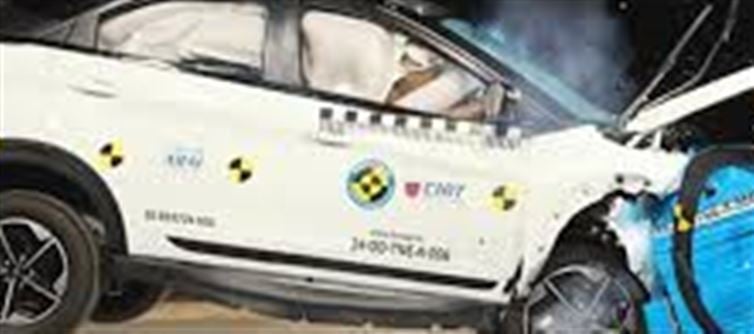
India’s car safety standards are set for a major overhaul with the introduction of Bharat NCAP 2.0. Slated to roll out in 2027, this upgraded program promises to raise the bar for vehicle safety in the country. Here's a closer look at what to expect from this next-gen assessment.
1. A Big Step Forward for car Safety in India
Launched in october 2023, the Bharat New car Assessment Program (BNCAP) began assessing vehicle safety in India. But the big news is the upcoming Bharat NCAP 2.0, slated for 2027, which will take car safety standards to a whole new level. It promises to introduce tougher crash tests and advanced testing methodologies to ensure that cars on indian roads are safer than ever before.
2. Full-Frontal crash Tests: A Game Changer
One of the most significant changes with Bharat NCAP 2.0 is the introduction of full-frontal crash tests. Until now, car safety tests in india have been less rigorous compared to global standards. The new full-frontal tests will simulate high-impact collisions at higher speeds, ensuring that vehicles can withstand real-world accidents and protect passengers more effectively.
3. Advanced Dummies for Better Accuracy
Gone are the days of standard crash test dummies. Bharat NCAP 2.0 will use advanced crash test dummies equipped with sensors that provide more detailed and accurate data. This will allow for a deeper understanding of how different body types react to impact, leading to more tailored safety features for passengers of all sizes.
4. Stricter Safety Standards for indian Cars
Under BNCAP 2.0, manufacturers will be required to meet stricter safety benchmarks to earn high star ratings. The program will incorporate international standards, bringing indian cars up to par with global safety norms. This will not only encourage automakers to prioritize safety but also give consumers more informed choices when it comes to purchasing cars.
5. Improved Pedestrian Safety Features
Along with protecting passengers, Bharat NCAP 2.0 will place a stronger emphasis on pedestrian safety. The assessment will include tests to evaluate how vehicles protect vulnerable road users like pedestrians, especially in low-speed accidents. This could drive automakers to integrate features like active bumpers and pedestrian airbags into their designs.
6. A Win for indian Consumers
The new Bharat NCAP 2.0 is a clear win for consumers. With cars becoming safer, it gives Indian buyers more confidence when purchasing vehicles. The program will help to establish a stronger connection between safety ratings and car sales, making it easier for consumers to choose vehicles that offer top-notch protection.
7. Encouraging Global Recognition
As India’s auto industry continues to grow, Bharat NCAP 2.0 could become a standard recognized globally. High safety ratings from this program could give Indian-made cars an edge in international markets, ensuring that indian brands are seen as serious contenders on the world stage.
In conclusion, Bharat NCAP 2.0 is more than just a series of tests. It’s a comprehensive upgrade to the safety standards for vehicles in India. By integrating advanced crash tests, improved dummies, and stricter regulations, this new initiative will make indian roads safer for everyone, paving the way for an era of smarter, safer, and more responsible driving.
Disclaimer:
The views and opinions expressed in this article are those of the author and do not necessarily reflect the official policy or position of any agency, organization, employer, or company. All information provided is for general informational purposes only. While every effort has been made to ensure accuracy, we make no representations or warranties of any kind, express or implied, about the completeness, reliability, or suitability of the information contained herein. Readers are advised to verify facts and seek professional advice where necessary. Any reliance placed on such information is strictly at the reader’s own risk..jpg)




 click and follow Indiaherald WhatsApp channel
click and follow Indiaherald WhatsApp channel